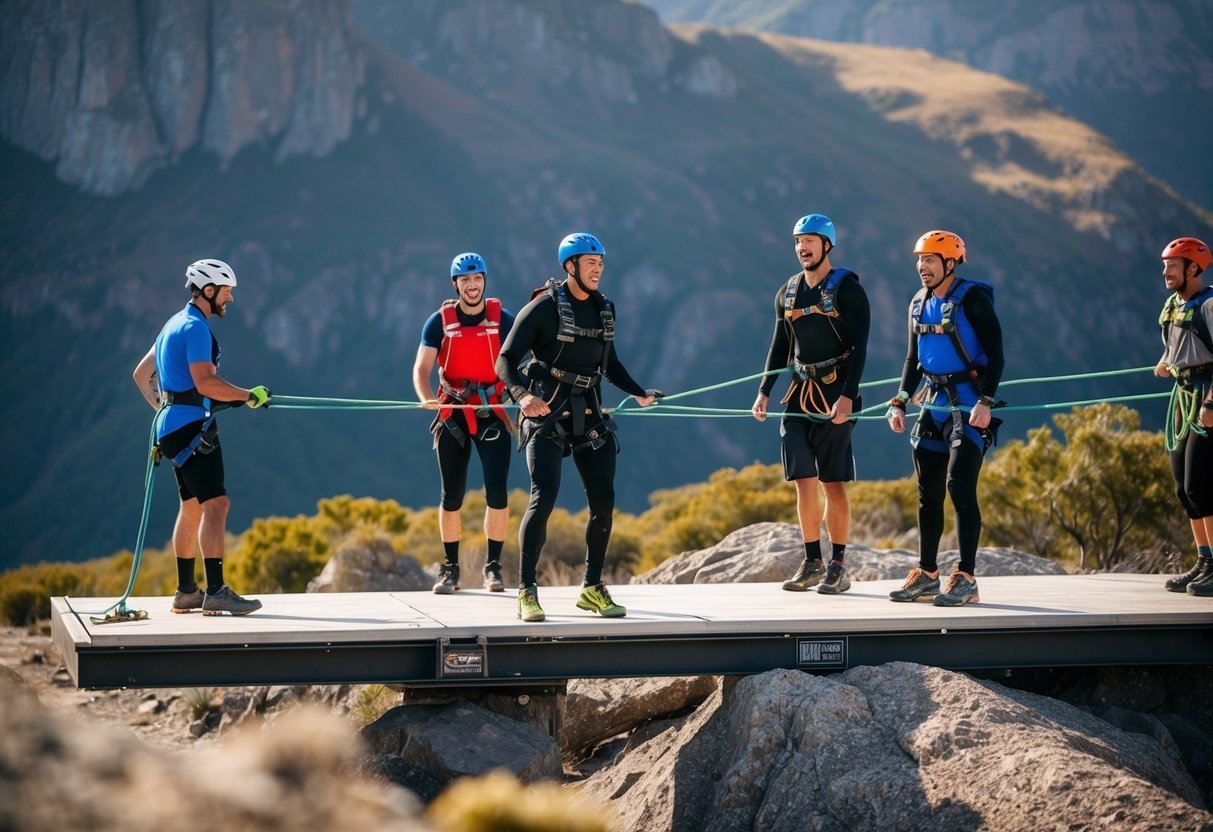Bungee jumping has captivated thrill-seekers for decades, offering an unparalleled rush of adrenaline as you plummet towards the earth.
This heart-pounding sport has evolved from ancient rituals to a modern-day extreme activity enjoyed worldwide.
Its transformation wouldn’t have been possible without the daring individuals who pushed the boundaries of what was thought possible.
You might be surprised to learn that bungee jumping traces its roots back to ancient land diving rituals performed on Pentecost Island. From these humble beginnings, a handful of adventurers took the concept and ran with it, developing the techniques and equipment that would make bungee jumping accessible to adrenaline junkies everywhere.
Let’s take a look at four pioneers who played crucial roles in shaping the sport into what it is today.
1) AJ Hackett
You might know AJ Hackett as the guy who made bungee jumping famous.
Born in New Zealand in 1958, Hackett took the extreme sport to new heights – literally!
In 1986, Hackett and his friend Henry van Asch started developing modern bungee jumping techniques.
They were inspired by the land divers of Vanuatu, who jump from tall structures with vines tied to their ankles.
Hackett’s big break came in 1987 when he made a daring bungee jump from the Eiffel Tower.
This stunt caught the world’s attention and put bungee jumping on the map.
The following year, Hackett and van Asch opened the world’s first commercial bungee site in Ohakune, New Zealand.
This marked the beginning of bungee jumping as a mainstream adventure sport.
Hackett didn’t stop there.
He went on to establish bungee sites around the globe, from Australia to France.
His company, AJ Hackett Bungy, continues to push the boundaries of extreme sports.
You can experience Hackett’s legacy at various locations worldwide.
Whether you’re in New Zealand or Singapore, you’ll find AJ Hackett Bungy sites offering heart-stopping thrills.
2) Henry van Asch
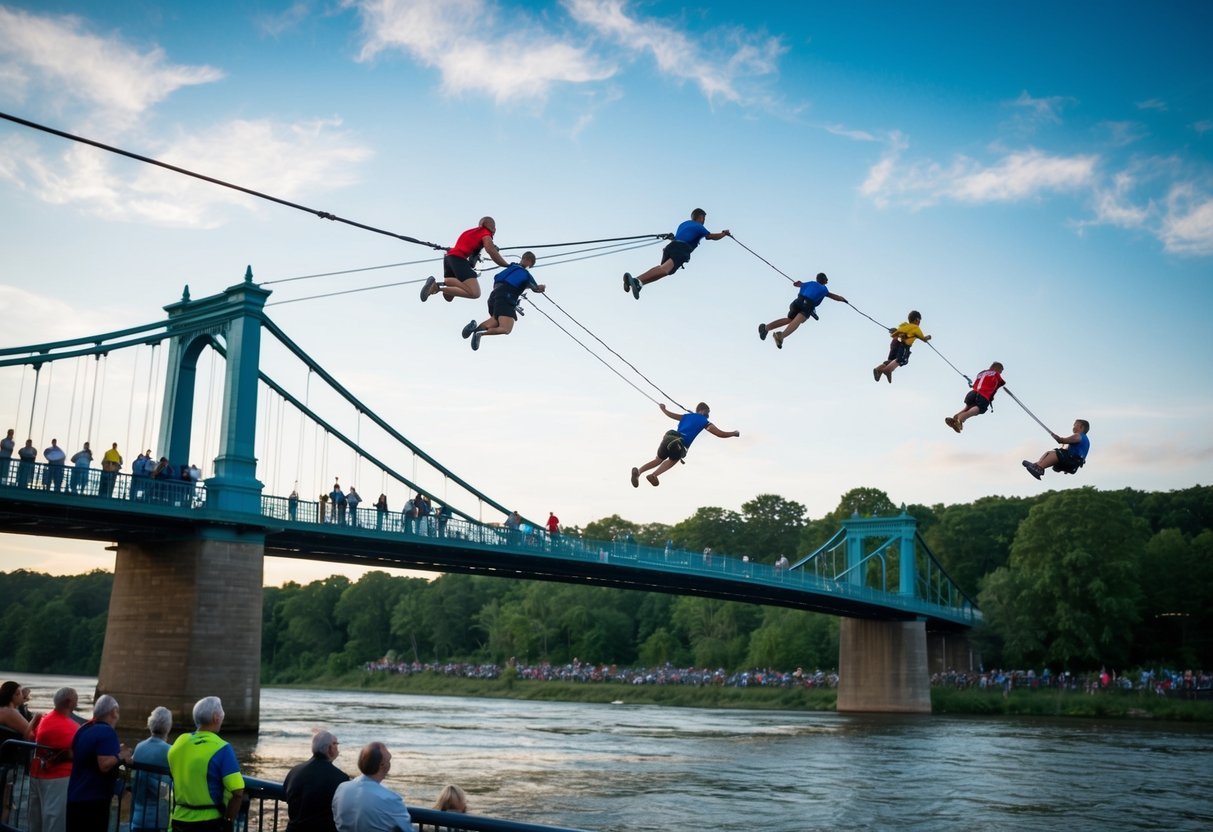
You might not know Henry van Asch by name, but you’ve probably felt his influence if you’ve ever gone bungee jumping.
This Kiwi adrenaline junkie teamed up with AJ Hackett to bring bungee jumping to the masses.
Van Asch wasn’t content with just jumping off bridges.
He wanted to share the thrill with the world.
In the 1980s, he and Hackett developed a modern bungee cord made from woven rubber threads.
They tested it extensively in New Zealand before taking it global.
What makes van Asch’s contribution so special? He believed bungee jumping was more than just a physical rush.
To him, it was an emotional and intellectual adventure.
It’s about conquering your fears and making a personal choice to take the leap.
Together with Hackett, van Asch founded AJ Hackett Bungy, the first commercial bungee jumping outfit in New Zealand.
This paved the way for extreme sports enthusiasts worldwide to experience the ultimate free fall.
3) Chris Sigglekow
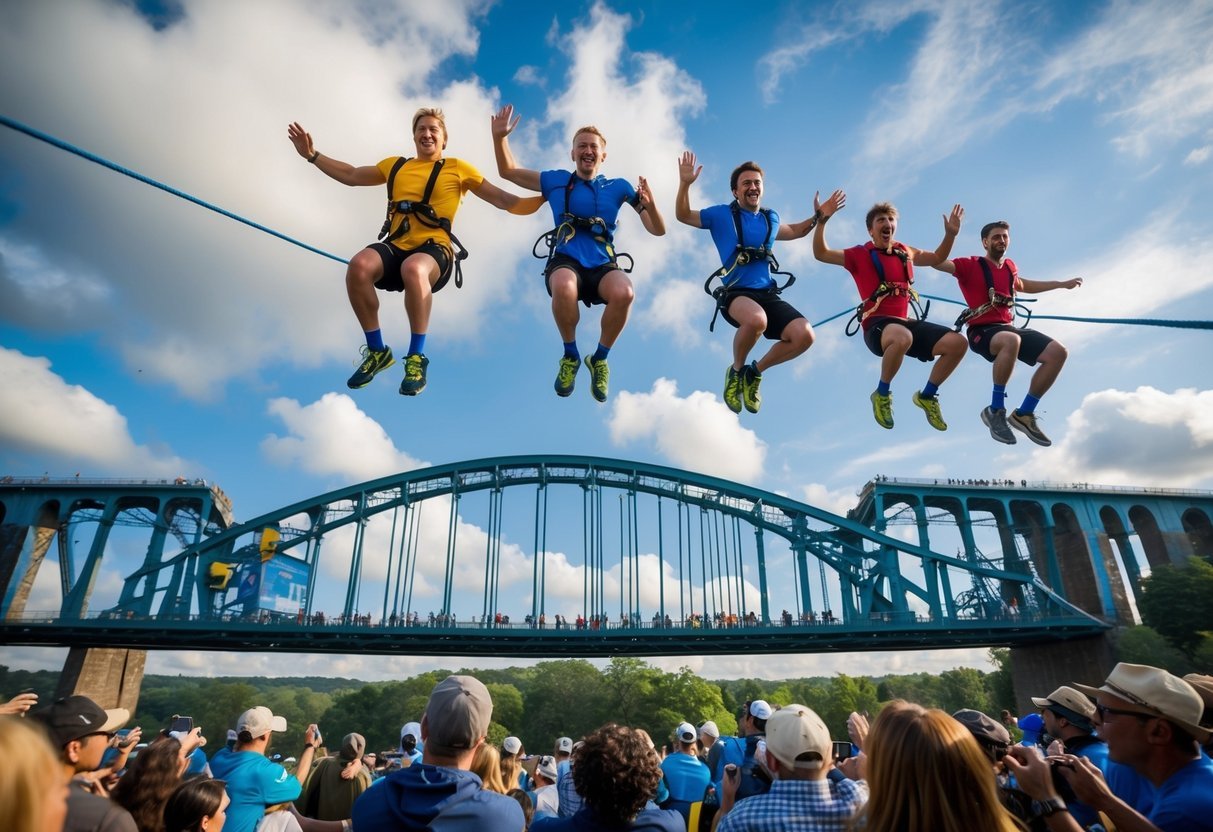
You might not know his name, but Chris Sigglekow is a true bungee jumping pioneer.
This Kiwi daredevil was actually the first person to bungee jump in New Zealand, beating the more famous AJ Hackett by six years.
Back in the day, Sigglekow took the plunge off Pelorus Bridge in Marlborough.
He didn’t have fancy equipment – just a borrowed parachute harness and some rope cut to a random length.
Sigglekow’s jump wasn’t perfect.
He went straight into the water feet first, but it was a start.
This gutsy move laid the groundwork for the extreme sport you know and love today.
Later on, Sigglekow teamed up with AJ Hackett.
Together, they worked on making bungee jumping safer.
They used math and science to create super-stretchy cords that would give you the thrill without the spill.
4) Cat Rickard
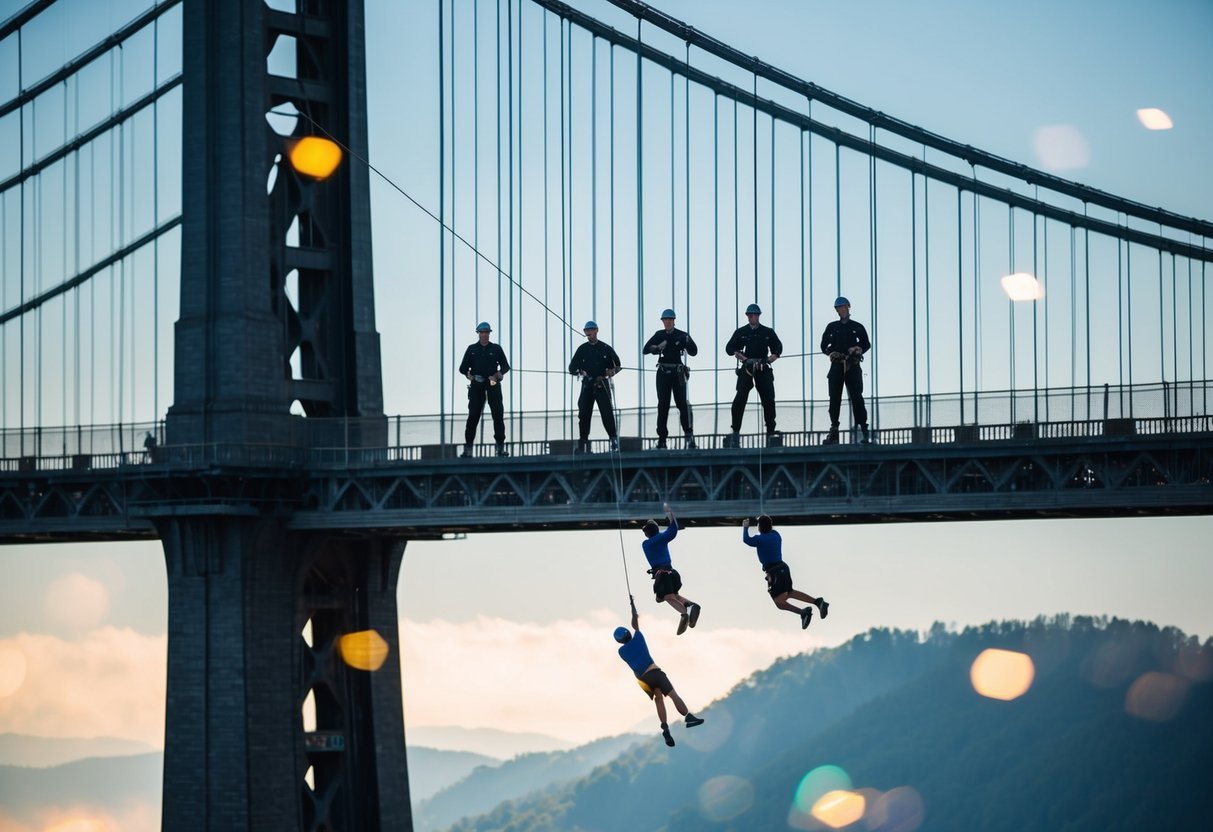
Ever heard of Cat Rickard? She’s one of the unsung heroes of bungee jumping.
Back in the early days of the sport, Cat was right there pushing its limits.
You might not know this, but Cat was one of the first women to make a name for herself in the Dangerous Sports Club.
This group of thrill-seekers basically invented modern bungee jumping.
Cat didn’t just jump – she innovated.
She helped develop safer harnesses and cords, making the sport more accessible to everyone.
Without her contributions, you might not be able to try bungee jumping at your local adventure park today.
But Cat’s real claim to fame? She was part of the team that made the first modern bungee jumps from the Clifton Suspension Bridge in 1979.
Talk about a leap of faith!
Cat’s fearless attitude inspired countless others to give bungee jumping a try.
She proved that anyone, regardless of gender, could excel in this heart-pounding sport.
History of Bungee Jumping
Bungee jumping has roots in ancient traditions and evolved into a thrilling modern sport.
Its journey spans centuries, from tribal rituals to commercial adventure tourism.
Early Days and Milestones
Bungee jumping’s origins trace back to the land diving ritual on Pentecost Island, Vanuatu.
Young men would leap from tall wooden towers with vines tied to their ankles as a rite of passage and to ensure a good yam harvest.
This practice caught the attention of Western explorers in the 20th century.
In 1979, members of the Oxford University Dangerous Sports Club drew inspiration from the Vanuatu ritual.
They performed what many consider the first modern bungee jumps from Bristol’s Clifton Suspension Bridge.
These daring leaps sparked interest worldwide, leading to more experimental jumps in the early 1980s.
Development of Modern Bungee Jumping
The sport took a significant leap forward when A.J. Hackett and Henry van Asch commercialized bungee jumping in 1988.
They opened the world’s first commercial bungee site at Kawarau Bridge in New Zealand.
Hackett’s promotional stunts, including jumping off the Eiffel Tower, catapulted bungee jumping into the global spotlight.
Safety innovations followed, with specialized equipment and trained staff becoming standard.
Throughout the 1990s, bungee jumping sites popped up worldwide.
The sport diversified, introducing variations like tandem jumps and indoor bungee experiences.
Today, you can find bungee jumping opportunities on every continent, offering varying heights and stunning locations for your adrenaline fix.
Impact of Pioneers on Adventure Sports
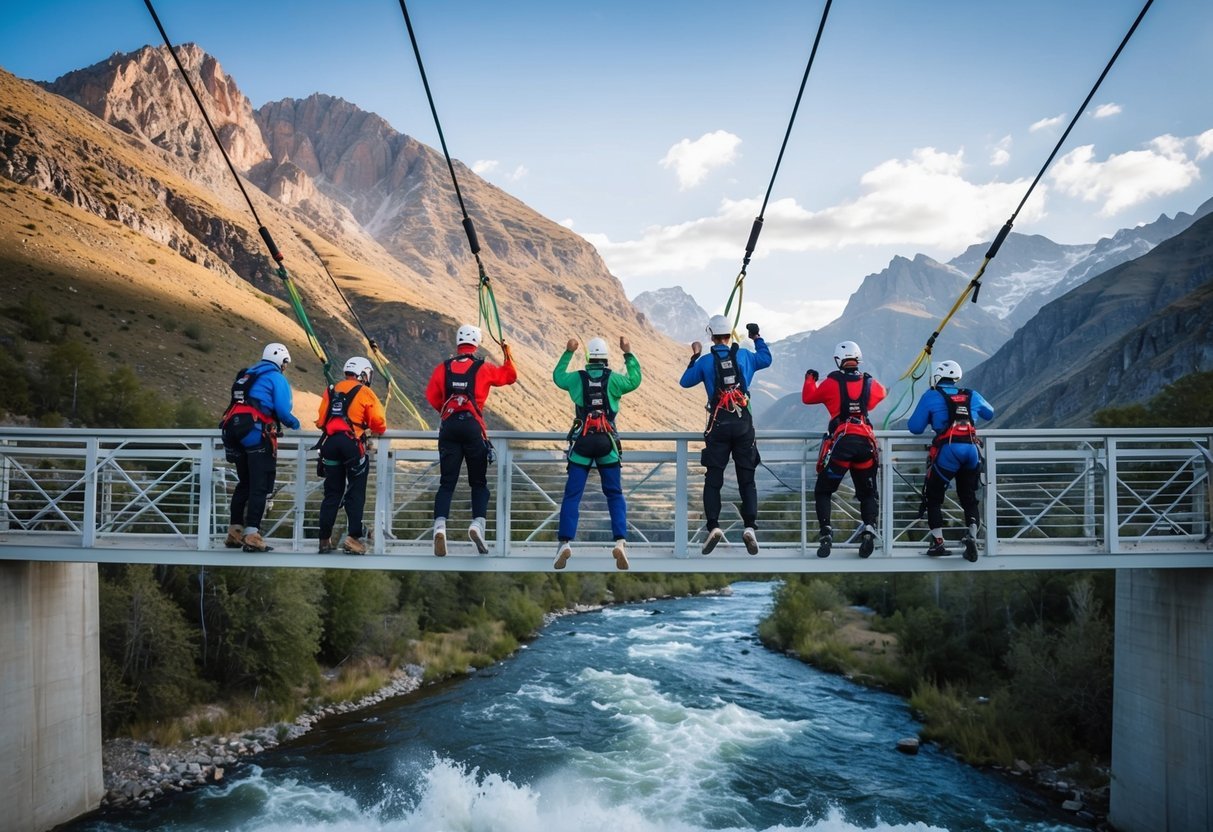
The pioneers of bungee jumping transformed extreme sports culture and drove technological advancements in safety equipment.
Their daring spirit inspired new generations of thrill-seekers and pushed the boundaries of what was possible in adventure activities.
Influence on Extreme Sports Culture
You can thank bungee jumping pioneers for sparking a revolution in extreme sports.
Their audacious leaps captivated the public imagination and fueled a growing appetite for adrenaline-pumping activities.
The commercialization of bungee jumping in the 1990s paved the way for other extreme sports to gain mainstream popularity.
Suddenly, activities like skydiving, base jumping, and wingsuit flying seemed more accessible to ordinary people seeking extraordinary thrills.
These pioneers also challenged societal norms around risk-taking.
They showed that calculated risks could lead to incredible rewards, inspiring you to push your own limits in sports and life.
Technological Innovations
Bungee jumping pioneers didn’t just inspire – they innovated.
Their pursuit of bigger thrills drove significant advancements in safety technology.
Key innovations include:
- Improved elastic cord materials
- Advanced harness designs
- Precision-engineered attachment systems
- Safety backup measures
These developments made bungee jumping safer and more reliable.
Many of these innovations found applications in other extreme sports, enhancing safety across the adventure industry.
The first commercial bungee operation at New Zealand’s Kawarau Bridge set new standards for safety protocols and equipment testing.
These practices have been adopted and adapted by extreme sports organizers worldwide, helping you stay safer while seeking thrills.
Frequently Asked Questions
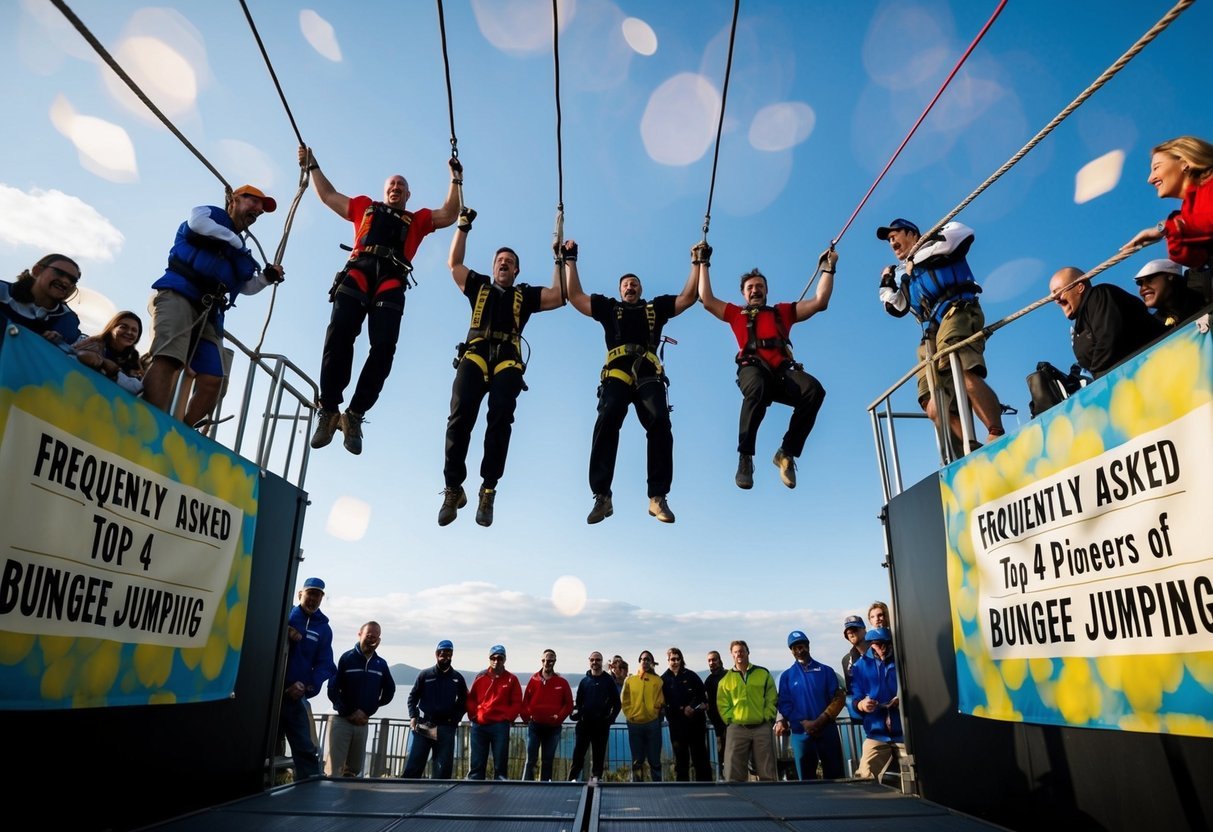
Bungee jumping has a rich history filled with daring pioneers, impressive records, and evolving safety measures.
Let’s explore some of the most common questions about this thrilling extreme sport.
Who is considered the father of bungee jumping?
AJ Hackett is widely recognized as the father of modern bungee jumping.
He popularized the sport in the 1980s and established the first commercial bungee operation in New Zealand.
Hackett’s famous jump from the Eiffel Tower in 1987 catapulted bungee jumping into the global spotlight.
What are some records associated with bungee jumping?
The highest commercial bungee jump is located at the Macau Tower in China, standing at a whopping 233 meters (764 feet).
The record for the most bungee jumps in 24 hours is held by Kevin Scott Huntly, who completed 151 jumps in 2011.
How has bungee jumping equipment evolved over time?
Bungee equipment has come a long way from the early days of land diving with vines.
Modern jumpers use specially designed elastic cords made from latex rubber encased in a protective sheath.
Harnesses have also improved, now featuring multiple attachment points for added safety and comfort.
Are there any significant historical milestones in the development of bungee jumping?
The land diving ritual of Vanuatu is considered the ancient predecessor of modern bungee jumping, dating back centuries.
In 1979, members of the Oxford University Dangerous Sports Club performed the first modern bungee jumps from Bristol’s Clifton Suspension Bridge.
What safety measures are crucial for bungee jumping?
Regular equipment inspections and proper maintenance are essential for safe bungee operations.
Trained professionals should always be present to check harnesses, calculate jump weights, and ensure correct cord lengths.
Can you give a brief description of bungee jumping’s origin?
The origin of bungee jumping can be traced back to the land diving ritual.
This ritual was practiced on Pentecost Island in Vanuatu.
Young men would jump from tall wooden towers with vines tied to their ankles as a test of courage and a ritual to ensure a good yam harvest.
This ancient practice inspired modern thrill-seekers to develop the sport we know today as bungee jumping.


